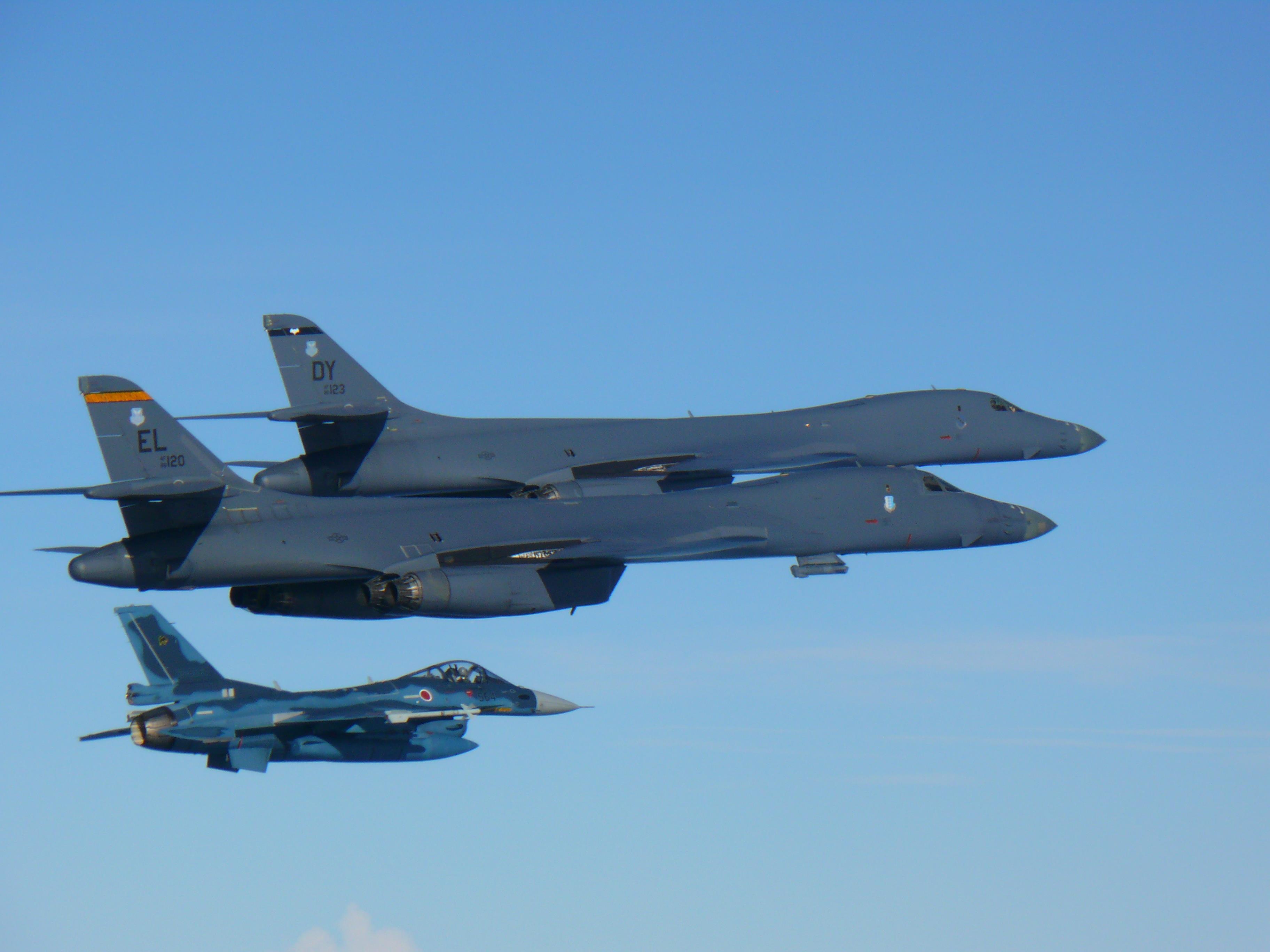A USAF B-1B Lancer assigned to the 9th Expeditionary Bomb Squadron, deployed from Dyess AFB, Texas, and a B-1B assigned to the 28th Bomb Wing, deployed from Ellsworth AFB, S.D., fly a 10-hour mission from Andersen AFB, Guam, into Japanese airspace and over the Korean Peninsula, July 30, 2017. The B-1s first made contact with Japan Air Self-Defense Force F-2 fighter jets in Japanese airspace, then proceeded over the Korean Peninsula and were joined by South Korean F-15 fighter jets. The exercise was in response to North Korea's July 4 ICBM launch. Courtesy photo.
The four countries currently posing, or projected to pose, a nuclear threat to the US are China, Russia, North Korea, and Iran, said Vice Chairman of the Joint Chiefs of Staff USAF Gen. Paul Selva.
“All but one currently possess nuclear weapons,” he added. And none of the countries have been deterred from “fielding large inventories of ballistic missiles,” he said.
Speaking on Capitol Hill Thursday at an AFA Mitchell Institute event, Selva broke down some of the threats these countries pose to the US now and possibly in the future.
North Korea
While it’s currently unclear whether North Korea’s leader Kim Jong-Un can “actually” target the US with a long-range ICBM, “it is very clear that he has figured out how to build missiles,” Selva said, later adding, “There’s a lot we don’t know.” For now, the military has “expressed a policy” that it will extend its “nuclear umbrella” over all allies, including “the Republic of Korea and Japan.” Selva said the military “doesn’t believe” Kim can “currently” target the US.
As he said while testifying before Congress in July during his confirmation hearing, Selva said for Kim to hit the US with a nuclear weapon, he has to achieve four things:
- A missile that can handle the appropriate distance. “We believe he has that capability right now,” Selva said.
- A guidance and control system to move a rocket across that distance “without it breaking up.” Selva said, “We don’t know if he has that. We don’t know that he doesn’t.”
- A re-entry vehicle capable of surviving ICBM shot stresses. “We don’t know if he’s got that technology,” he said. “We don’t know that he doesn’t.”
- A nuclear weapon that can “survive that trip.” “Again, that’s a ‘we don’t know,’” Selva said. “We don’t know the design specifics of his nuclear weapons.”
Selva said Kim isn’t hindered by the American test “philosophy, which is ‘design until your brain hurts and test to be successful.’” Instead, Kim and his engineers “tweak, test, tweak, test,” which allows them to “stumble across some really interesting things” because they’re “willing to fail.”
And Kim is “clearly willing to fail,” said Selva, adding the North Korean leader solved his missile problem very quickly when compared to traditional timelines.
Russia
Selva said Russia is “two thirds of the way” through the “journey” to “modernize all of their warheads, all of their missiles, all their aircraft, and all of the weapons that they use.”
China
He then described “China’s journey. That is increasing the inventory and accuracy of their nuclear weapons, making them more mobile and harder to target, and a changing philosophy in their deterrence from almost all counter value to almost all counter force,” meaning switching from targeting a nation’s valuable assets, like its cities, to targeting a nation’s ability to project force, like its military facilities.
Iran
The current nuclear deal with Iran, “Whatever your opinion of that agreement is,” Selva said, has kept Iran from reaching nuclearization, “at least for the moment.”
In that context, “we must move forward with the replacement of our nuclear forces, force structure, and warheads to get to a safe, secure, reliable nuclear deterrent,” Selva said.
